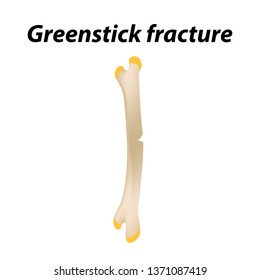Get Ready To Delve Into The Fascinating Globe Of Mobile Interactions In Cold Laser Treatment And Exactly How It Uses Light To Promote Recovery. Take A Much Deeper Dive Into The Scientific Elements!
Get Ready To Delve Into The Fascinating Globe Of Mobile Interactions In Cold Laser Treatment And Exactly How It Uses Light To Promote Recovery. Take A Much Deeper Dive Into The Scientific Elements!
Blog Article
Authored By-Castro Hutchison
You may have heard of cold laser therapy as an encouraging treatment alternative for numerous problems, but have you ever before asked yourself exactly how it really works with a mobile level? Understanding the devices behind this therapy can shed light on its performance in promoting healing and minimizing swelling. By discovering the scientific research behind cold laser therapy, you'll acquire understandings right into the remarkable ways in which light can influence mobile processes and promote tissue repair service.
Just How Cold Laser Treatment Functions
To comprehend exactly how cold laser treatment works, you need to comprehend the basic principles of how light energy communicates with organic tissues. Cold laser treatment, likewise referred to as low-level laser treatment (LLLT), makes use of details wavelengths of light to penetrate the skin and target hidden cells. Unlike the extreme lasers made use of in surgeries, cold lasers produce low levels of light that don't produce heat or create damages to the cells.
When these gentle light waves reach the cells, they're soaked up by parts called chromophores, such as cytochrome c oxidase in mitochondria. https://chiropractor-near-me-revi73951.luwebs.com/30852376/discovering-the-conveniences-of-cold-laser-therapy-a-groundbreaking-strategy-to-recovering sets off a collection of biological reactions, including raised cellular power manufacturing and the release of nitric oxide, which boosts blood circulation and decreases inflammation.
Moreover, the light power can also stimulate the manufacturing of adenosine triphosphate (ATP), the energy currency of cells, aiding in cellular repair and regrowth procedures.
In essence, cold laser therapy uses the power of light power to promote healing and reduce discomfort in a non-invasive and gentle way.
Devices of Activity
Exactly how does cold laser therapy actually function to produce its restorative impacts on biological cells?
Cold laser therapy, also known as low-level laser treatment (LLLT), operates through a process known as photobiomodulation. When the cold laser is applied to the skin, the light energy passes through the tissues and is absorbed by chromophores within the cells.
These chromophores, such as cytochrome c oxidase in the mitochondria, are then boosted by the light energy, leading to a cascade of biological reactions. One essential system of activity is the improvement of mobile metabolic process.
laser treatment for pain relief soaked up light power enhances ATP manufacturing in the mitochondria, which is crucial for mobile function and fixing. In infrared led bed therapy stamford , cold laser treatment helps to lower inflammation by hindering inflammatory arbitrators and advertising the release of anti-inflammatory cytokines.
This anti-inflammatory effect contributes to pain relief and tissue healing.
Therapeutic Impacts
Understanding the restorative effects of cold laser therapy includes acknowledging exactly how the enhanced mobile metabolism and anti-inflammatory homes add to its positive outcomes on biological cells.
When the cold laser is related to the affected location, it promotes the mitochondria within the cells, leading to raised production of adenosine triphosphate (ATP), which is vital for cellular function and repair. This boost in mobile energy accelerates the healing procedure by promoting cells regeneration and reducing inflammation.
In addition, the anti-inflammatory properties of cold laser treatment help to reduce pain and swelling in the targeted area. By preventing inflammatory arbitrators and advertising the release of anti-inflammatory cytokines, cold laser treatment aids in relieving pain and improving the general recovery reaction.
This reduction in swelling not just gives instant relief yet also sustains lasting cells repair work.
Verdict
To conclude, cold laser treatment works by stimulating cellular repair and cells regrowth via photobiomodulation. Its anti-inflammatory homes give pain alleviation and reduce swelling by hindering inflammatory moderators.
This treatment supplies a comprehensive approach to recovery, supplying both prompt alleviation and long-term tissue repair service benefits.
Through its systems of activity, cold laser treatment verifies to be an effective and promising therapy alternative for a selection of problems.
